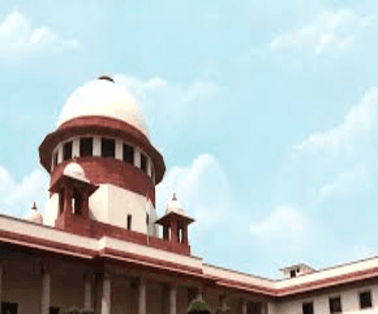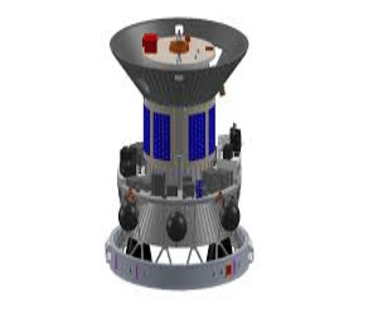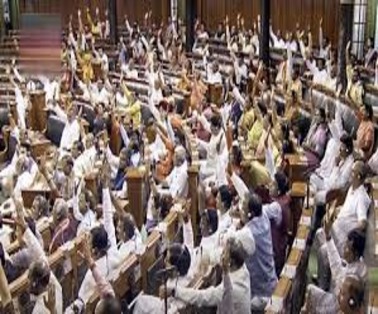The Supreme Court on Tuesday said that the Centre must stop its “pick and choose” approach by selectively accepting names of judges sent by the collegium for appointments and transfers
What Is Collegium System?
- The Collegium System is a system under which appointments/elevation of judges/lawyers to Supreme Court and transfers of judges of High Courts and Apex Court are decided by a forum of the Chief Justice of India and the four senior-most judges of the Supreme Court.
- In this system of appointment of Judges, the collegium will recommend the names of the candidates to the Central Government.
- Similarly, the Central Government also sends some of its proposed names to the Collegium. The Central Government does the fact checking and investigate the names and resends the file to the Collegium.
- Collegium considers the names or suggestions made by the Central Government and resends the file to the government for final approval.
- If the Collegium resends the same name again then the government has to give its assent to the names. But time limit is not fixed to reply. This is the reason that appointment of judges takes a long time.
- There is no mention of the Collegium either in the original Constitution of India or in successive amendments.
- After independence, India adopted the Constitution in 1950. According to the Constitution, up to 1973, the President appointed the Chief Justice of India and remaining judges of the Supreme Court in consultation with the CJI and other judges as he deemed necessary.
Historical Evolution of the Collegium System
The Collegiums System of appointment of judges was born through “three judges case” which interpreted constitutional articles on October 28, 1998.
First Judges Case (1981)
- It declared that the “primacy” of the CJI’s (Chief Justice of India) recommendation on judicial appointments and transfers can be refused for “cogent reasons.”
- The ruling gave the Executive primacy over the Judiciary in judicial appointments for the next 12 years.
Second Judges Case (1993):
- SC introduced the Collegium system, holding that “consultation” really meant “concurrence”.
- It added that it was not the CJI’s individual opinion, but an institutional opinion formed in consultation with the two senior-most judges in the SC.
Third Judges Case (1998):
- SC on the President’s reference (Article 143) expanded the Collegium to a five-member body, comprising the CJI and four of his senior-most colleagues.
Advantages and Disadvantages of the Collegium System
Advantages
- The collegium system increases secrecy. Ruma Pal, a former Judge of the Supreme Court of India, stated that this system is one of the best kept secret in the country. It kept secret within the four walls of the body for proper and effective functioning of the institution that makes the system opaquer.
- The collegium system makes Judiciary independent from the politics. It separates the judiciary from the influence of executive and legislative. With the Govt.’s influence judiciary can work without any fear and any sort of favour. This ensures the regulation of the doctrine of separation of power.
- There are many cases in which the judges of the Supreme Court were transferred because of the political influences. So the power given to executive organ for transferring the judges would lead to decrease the independence of judiciary as well as it will stop the judiciary organ to work effectively.
- The executive organ is not specialist or does not have the knowledge regarding the requirements of the Judge as comparative to the CJI. Collegium system ensures that the deserving one is sitting in the position of the Judge in Supreme Court.
Disadvantages
- This system does not provide any guidelines in selecting the candidates for the judge position of the Supreme Court because of which it leads to wide scope for the nepotism and favoritism. Because of which the deserving candidates are unable to appointed as the Judge.
- The collegium system does not have any criteria for testing the candidate as well as they don’t investigate any background of the candidates and they are not accountable to any administrative body that may lead to wrong choice of the candidate while overlooking the right candidate.
- Already there are many cases pending in the Court, they are having limited time the power given to them for the appointment would lead to burden to Judiciary.
- This system leads to non transparency of the judicial system, which is very harmful for the regulation of law and order in the country.
The Collegium System: How It Works
- The President of India appoints the CJI and the other SC judges.
- For other judges of the top court, the proposal is initiated by the CJI.
- The CJI consults the rest of the Collegium members, as well as the senior-most judge of the court hailing from the High Court to which the recommended person belongs.
- The consultees must record their opinions in writing and it should form part of the file.
- The Collegium sends the recommendation to the Law Minister, who forwards it to the Prime Minister to advise the President.
- The Chief Justice of High Courts is appointed as per the policy of having Chief Justices from outside the respective States.
- The Collegium takes the call on the elevation.
Appointment Of CJI For High Courts
- High Court judges are recommended by a Collegium comprising the CJI and two senior-most judges.
- The proposal, however, is initiated by the Chief Justice of the High Court concerned in consultation with two senior-most colleagues.
- The recommendation is sent to the Chief Minister, who advises the Governor to send the proposal to the Union Law Minister.
Steps Taken to Reform the Collegium System
- Venkatachaliah Commission – The government appointed the Justice M N Venkatachaliah Commission in 2000 to opine whether there was need to change the collegium system. The commission opined in favour of change, and prescribed a National Judicial Appointment Commission. It has to be consisting of the CJI and two senior-most judges, the law minister, and an eminent person from the public, to be chosen by the President in consultation with the CJI.
- National Judicial Appointment Commission- The government moved 99th Constitutional Amendment Bill to establish National Judicial Appointment Commission. It was envisaged as an independent commission to appoint and transfer judges of High Court and appoint judges of Supreme Court of India. It was composed of three senior judges, two eminent outsiders and the Law Minister. The constitutional amendment was passed by Parliament and was ratified by 20 states. However, before it was notified, it was challenged in Supreme Court as an attempt by government to interfere with the independence of the judiciary. The motive behind creation of NJAC was to bring reforms in appointment process of Indian higher judiciary
Collegium System in Comparative Perspective
|
Country |
Method of Appointment to the highest court |
Who is involved in making the appointments |
|
UK |
SC judges are appointed by a five-person selection commission. |
It consists of the SC President, his deputy, and one member each appointed by the JACs of England, Scotland and Northern Ireland. (The JACs comprise lay persons, members of the judiciary and the Bar and make appointments of judges of lower courts.) |
|
Canada |
Appointments are made by the Governor in Council. |
A selection panel comprising five MPs (from the government and the opposition) reviews list of nominees and submits 3 names to the Prime Minister. |
|
USA |
Appointments are made by the President. |
Supreme Court Justices are nominated by the President and confirmed by the United States Senate. |
|
Germany |
Appointments are made by election. |
Half the members of the Federal Constitutional Court are elected by the executive and half by the legislature. |
|
France |
Appointments are made by the President. |
President receives proposals for appointments from Conseil Superieur de la Magistrature. |
To Download Monthly Current Affairs PDF Click here
Click here to get a free demo
Everything About CLAT 2026



